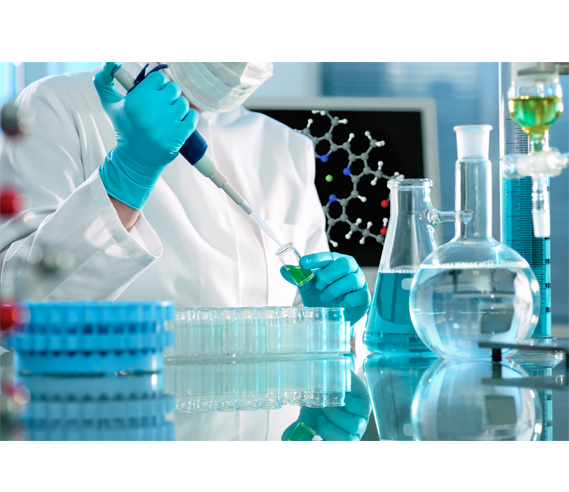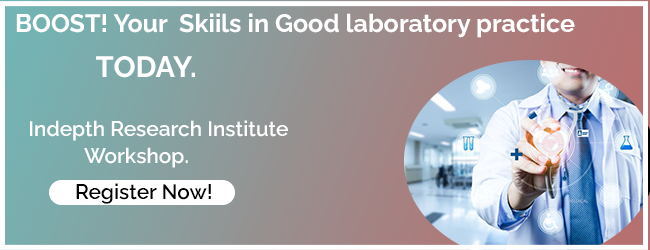Contents
- 1 Overview
- 2 Good laboratory practice (GLP) principles
- 3 Advantages and disadvantages of good laboratory practice
Overview
Good laboratory practice principles is crucial for regulatory compliance, as well as for ensuring the safety and efficacy of products developed through non-clinical studies. It promotes transparency, reliability, and trust in the scientific community and helps to protect public health and the environment.
Good laboratory practice originated in the 1970s as a response to concerns about the reliability of laboratory data submitted to regulatory agencies for the evaluation of chemicals, pharmaceuticals, and other products. It was initially developed for the testing of chemicals, but its principles have since been adopted in various scientific disciplines.
What is meant by the term good laboratory practice (GLP)?
Good Laboratory Practice (GLP) is a set of guidelines and standards that ensure the quality, integrity, and reliability of non-clinical laboratory studies conducted for regulatory purposes. Good laboratory practice provides a framework for the organization, conduct, and documentation of laboratory experiments, with the goal of generating accurate and reproducible data.
What are the key objectives of good laboratory practice (GLP)?
Consistency and Standardization
Good laboratory practice promotes the use of standardized procedures and protocols to ensure that experiments are conducted consistently and reproducibly across different laboratories.
Quality Assurance
Good laboratory practice incorporates quality assurance measures to ensure that studies are performed to a high standard. This involves the establishment of systems and procedures for monitoring and verifying the validity, accuracy, and reliability of data generated during the studies.
Documentation and Traceability
Good laboratory practice emphasizes the importance of accurate and comprehensive documentation of all aspects of the study, including experimental procedures, observations, data, and any deviations from the protocol. This documentation enables traceability and facilitates data verification and audit.
Personnel Training and Competence
Good laboratory practice requires that laboratory personnel have appropriate training, education, and experience to carry out their assigned tasks competently. Training records should be maintained to demonstrate the qualifications of the personnel involved in the study.
Facilities and Equipment
Good laboratory practice necessitates the provision of suitable laboratory facilities, including appropriate space, equipment, and instrumentation necessary for the conduct of the studies. Equipment should be properly calibrated, maintained, and validated to ensure accuracy and reliability.
Quality Control
Good laboratory practice incorporates quality control measures to monitor and ensure the reliability of the results generated in the laboratory. This includes regular calibration and maintenance of equipment, verification of reagents and reference materials, and participation in proficiency testing programs.
Study Management and Reporting
Good laboratory practice requires the implementation of a robust management system to plan, conduct, and report studies. Study plans, protocols, and standard operating procedures (SOPs) should be developed and followed, and study reports should accurately and transparently present the methods, results, and conclusions of the study.
Good laboratory practice (GLP) principles
The fundamental principles of good laboratory practice are meant to ensure the quality, reliability, and integrity of non-clinical laboratory studies are conducted for regulatory purposes. Adhering to these principles is crucial for regulatory compliance and for generating valid scientific data.
Here summary of 8 fundamental principles of good laboratory practice.
Organization and Personnel
Qualified personnel should be appointed to conduct the studies, and their training and qualifications should be documented. GLP emphasizes on the importance of a well-organized laboratory structure with clearly defined roles and responsibilities.
Facilities
Adequate laboratory facilities should be provided to support the conduct of studies which includes appropriate space, equipment, and instrumentation necessary for the intended research. The facilities should be designed, operated, and maintained to ensure the integrity and reliability of the data generated.
Standard Operating Procedures (SOPs)
GLP requires the development and implementation of written SOPs for all critical laboratory operations and procedures. SOPs provide standardized instructions on how to perform specific tasks, ensuring consistency and accuracy across studies.
Study Documentation
Comprehensive and accurate documentation is a key principle of GLP. All activities, observations, and data generated during the study should be recorded in a clear, complete, and timely manner. This includes raw data, test substance information, experimental conditions, and any deviations from the protocol.
Quality Assurance (QA)
QA plays a critical role in GLP implementation. It involves establishing quality control procedures, conducting audits and inspections, verifying compliance with regulations, and ensuring data integrity and reliability. QA activities help identify and rectify any deficiencies or deviations from GLP requirements.
Test Systems and Test Items
GLP requires the careful selection, characterization, and maintenance of test systems (e.g., laboratory animals, cell cultures) and test items (e.g., chemicals, drugs) used in the studies. This ensures the suitability and integrity of the experimental materials.
Study Conduct
GLP emphasizes the proper execution of studies according to predefined protocols. This includes conducting experiments under controlled conditions, following approved procedures, and maintaining a record of any changes or deviations from the protocol. Any changes made during the study should be documented and justified.
Data Handling and Reporting
GLP outlines specific requirements for data handling, analysis, and reporting. All generated data should be accurately analyzed, and results should be reported in a clear, concise, and transparent manner. The methods, results, and conclusions should be fully documented.
Quality Control
Regular quality control procedures should be implemented to ensure the accuracy and reliability of laboratory results. This includes calibrating and maintaining equipment, verifying the suitability and integrity of reagents and reference materials, and participating in proficiency testing programs.
Archiving and Retention
GLP mandates the long-term retention of study-related documentation and materials. This facilitates traceability, data verification, and potential reanalysis in the future. Proper archiving and storage conditions should be maintained to preserve the integrity of the stored data and materials.
Advantages and disadvantages of good laboratory practice
It is important to note that advantages of GLP generally outweighs the disadvantages, as they contribute to the quality, reliability, and credibility of laboratory research. However, it is essential for each laboratory to carefully evaluate the specific advantages and disadvantages based on their unique circumstances and research objectives.
What are the advantages of good laboratory practice?
Data Integrity and Reliability
GLP ensures that laboratory studies are conducted with accuracy, consistency, and adherence to predefined protocols. This enhances the reliability and integrity of the data generated, reducing the chances of errors, bias, or fraud. It promotes transparency and traceability in scientific research.
Regulatory Compliance
Many industries, such as pharmaceuticals, chemicals, and agrochemicals, have specific regulatory requirements for safety and efficacy evaluations. GLP compliance helps organizations meet these regulatory standards, ensuring that their products meet the necessary quality and safety criteria for approval and commercialization.
Reproducibility
GLP emphasizes the importance of standardized procedures, documentation, and record-keeping. This enables other researchers or regulatory authorities to replicate and verify study results, enhancing the reproducibility of experiments. Reproducible data allows for more accurate scientific conclusions and facilitates scientific collaboration.
Risk Management
GLP provides a systematic approach to identify, assess, and mitigate risks associated with laboratory activities. By implementing quality control measures, thorough documentation, and regular audits, potential risks are minimized. This reduces the likelihood of errors, contamination, or deviations that could compromise the validity of the study.
Efficiency and Cost-Effectiveness
Following GLP ensures that resources are utilized efficiently. By employing standardized procedures and maintaining accurate documentation, it becomes easier to track and identify potential bottlenecks or areas for improvement. Effective resource management improves overall efficiency and can contribute to cost savings in the long run.
Credibility and Trust
Adhering to GLP guidelines enhances the credibility and trustworthiness of the research conducted in a laboratory setting. GLP-compliant studies are generally perceived as more reliable, leading to increased confidence among stakeholders such as regulatory agencies, collaborators, and consumers.
What are the disadvantages of good laboratory practice?
Administrative burden
Compliance with GLP guidelines requires additional administrative work, such as documentation and record-keeping, which can increase workload.
Time-consuming
Adhering to GLP standards may involve extra time for training, quality control measures, and audits, potentially extending project timelines.
Cost implications
Implementing GLP may require investment in equipment, training, and infrastructure, increasing operational costs for laboratories.
Rigidity and inflexibility
Strict adherence to GLP protocols may limit the flexibility to adapt and innovate experimental approaches.
Applicability limitations
GLP guidelines are primarily designed for non-clinical laboratory studies and may not be directly applicable to all research areas or experimental designs.
Potential resistance to change
Some researchers or laboratory personnel may be resistant to adopting GLP practices due to the perceived additional workload or resistance to change.
Complexity
Understanding and implementing GLP guidelines correctly can be complex, requiring specialized knowledge and expertise.
Read on
We have a firm belief that every organization has a unique purpose only they can fulfil in this world. We work with you in organizing your resources to exploit opportunities so that you can fulfil your purpose and realize full potential. We build the capacity of people, processes and systems for organizational success and growth as well as nurturing a thriving ecosystem.
Ready to enhance your skills and boost your career? Explore our corporate training programs now and start your journey to success.











Comment here